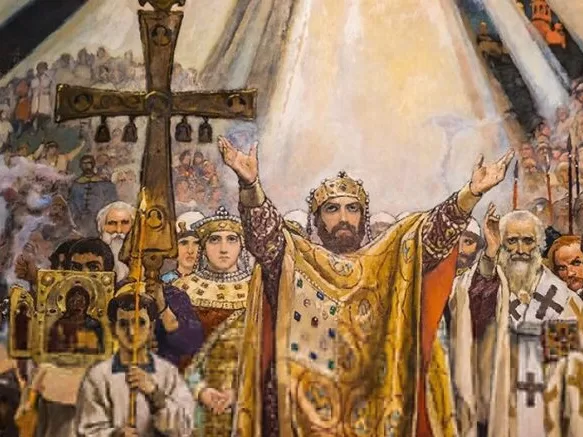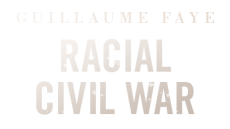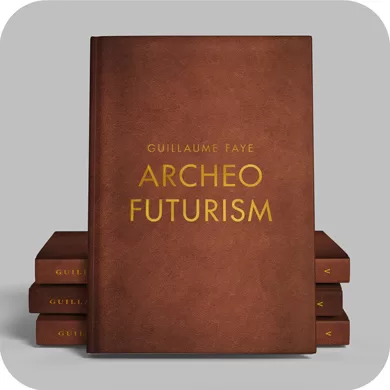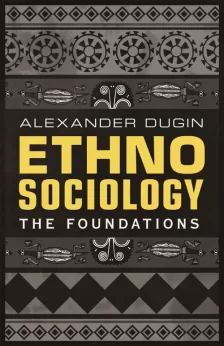The adoption of Orthodoxy by Vladimir, the Grand Prince of Kiev, marked the starting point of the Christian cycle in Russian history, which spans almost the entire history of Russia — with the exception of the Soviet period and the era of liberal reforms. This cycle represents a complex and multidimensional process, which would be inaccurate to describe as a gradual and unidirectional penetration of Orthodox-Byzantine culture into the folk environment, simultaneously displacing pre-Christian (‘pagan’) beliefs. Rather, it involved various phases of an extended synthesis of Byzantinism with the East Slavic civilisation of Demetra, with these phases being defined by different ratios of the main structures — the Byzantine ideology at the elite level and the reception of Christianity by the people as such.
The following phases, defined by various configurations of this ratio, can be identified:
- The beginning of the synthesis and the formation of the core of Russian-Christian beliefs (10th-12th centuries — Kievan centralism);
- The primary differentiation in the formation of the Russian Orthodox tradition, depending on the poles of the fracturing Russian world (12th-13th centuries);
- The formation of two poles of Orthodox tradition in the Mongol era — Vladimir (Moscow) Rus and the Grand Duchy of Lithuania (13th-15th centuries);
- The formation of Moscow Orthodoxy (Moscow — The Third Rome) — 15th-16th centuries;
- Attempts at ‘purification’ of Orthodoxy from ‘pagan’ accretions (the circle of devotees of God), modernisation, and schism (17th century);
- Modernist Orthodoxy, Western-Russian influence, and the parallel establishment of Old Believers in the Russian Empire of the 18th century;
- Slavophilism and Orthodox conservatism (elderhood, revival of Byzantinism) — end of the 18th-19th century;
- Sophiology, religious searches of the Silver Age figures, and projects of unity of faith — end of the 19th-beginning of the 20th century;
- Persecution and marginalisation of the Church in the Soviet period — 1917-1991;
- The abolition of the normative atheistic ideology and partial return to Orthodoxy during the liberal reforms and the first decades of the 3rd millennium.
Each of these historical periods had its own semantics and place in the overall structure of Russian history. With it, the ratio of popular faith to official ideology changed, creating a unique configuration of proportions of Russian Orthodoxy in each phase.
The first phase was characterised by a relatively free relationship between Christian and pre-Christian elements, where elites — including the Orthodox clergy, headed by the Byzantine episcopate and, more broadly, Greek teachers — generally tolerated folk beliefs and resorted to repression only when pagans directly challenged the new religion, calling for an uprising against it and a return to polytheism. This tolerance allowed the initial core of Russian Orthodoxy to form, building deep structures of semantic correspondences and homologies between the Indo-European (yet predominantly peasant!) tradition of the ancient Slavs and the Christian religion in its Byzantine articulation.
In the second phase, this worldview, which had broadly formed and was unified across all ends of Kievan Rus, began to partially diverge, mirroring the political geography of princely fragmentation at the cultural level. However, the homology between the religious and the political was partial and relative, and the religious-cultural community generally prevailed over the gradual distancing of Western (Galician-Volhynian and Polotsk) Rus from the strengthening Eastern (Rostov-Suzdal, later Vladimir) Rus, as well as over a certain separation of Northern Rus (Novgorod and Pskov). Nevertheless, already in this period, a stylistic division between the two poles of Russian Orthodoxy — Western and Eastern — began to emerge, albeit very tentatively and almost imperceptibly. Western Orthodoxy was more influenced by neighbouring Catholic peoples (primarily Poles and Hungarians, as well as directly by Rome) than Vladimir Rus, which remained more closely connected not just with Byzantium but with the core of Russian Orthodoxy that had formed in the first phase. It can be said that the centre of Russian Orthodox tradition had already begun to shift eastward in this phase.
During the Mongol era, the division noted in the second phase became even more pronounced as Eastern and Western Rus found themselves in the context of two different political entities: the Golden Horde and the Grand Duchy of Lithuania, which united with Catholic Poland after the Union of Krewo. If the Mongols, whose rulers after Khan Uzbek (c. 1283-1341) converted to Islam, were tolerant or at least indifferent to the Orthodoxy of their Russian subjects, then Catholic Poland, on the contrary, tried to actively influence the Russian population and its religious beliefs. This further exacerbated the differences but nonetheless did not lead to the loss of deep unity. Meanwhile, in Western Rus, the official ideology of the elites more easily approached Catholicism, whereas the popular — peasant — masses remained staunch adherents of specifically Orthodox tradition, which predetermined a particular tension in this zone of the Russian world between the official ideology and the worldview of the common people. In Eastern Rus, during the Mongol period, such stratification did not occur, which became fully evident in the next phase.
The fourth phase was particularly pronounced in Moscow Rus, where after the end of the Golden Horde’s dominance, a new ideology emerged — the Russian Katechon (Moscow — The Third Rome) when the fall of Byzantium and almost simultaneous disappearance of the Golden Horde were perceived as the transfer of the mission of the bulwark of universal Orthodoxy to the Russian state and the Russian people. Here, the peculiarity of Russian Orthodoxy (in its foundational — previously Kievan and preserved in Eastern Rus — form) was recognised as a testimony to eschatological election. Something similar we encounter somewhat earlier among the Bulgarians (in the First and Second Kingdoms) and in the Serbian state of the Nemanjics, especially in the era of Dušan the Mighty (1308-1355), as well as partly in Wallachia under Vlad III (1431-1476) and Moldavia under Stephen the Great (1429-1504). In this phase, especially in the era of Ivan IV (1530-1584), a harmonisation of popular and official Christianity occurs, repeating on a new level the synthesis of the elite and the people of the early Kiev period. Here not only does Christian consciousness reach the deepest depths of popular culture, but the popular spirit rises to the highest peaks of state power, affecting the personality of the sovereign himself, who became the first Russian tsar in history (previously, the supreme ruler of the Russian state was the grand prince).
During the period that includes the Time of Troubles and the reign of the first Romanov tsars, the strong cultural and religious cohesion that Moscow enjoyed under Ivan the Terrible began to fade. A pivotal group in this era was the Bogolyubsky circle, which included central figures of the looming religious division: Patriarch Nikon (1605-1681) and Protopope Avvakum (1620-1682), both orbiting around Alexei Mikhailovich (1629-1676). This group aimed to cleanse Christianity of its syncretic folk traditions, but their efforts were interpreted differently by two camps: those advocating reform and modernisation along the lines of a Western-Russian model, primarily to facilitate the reintegration of Western Russian territories previously lost to Poland, and the Old Believers, who rallied behind Avvakum, staunchly defending traditional Moscow Orthodoxy as the essence of Russia’s divine mission and its role as the guardian of true Orthodoxy.
These conflicting visions led to a schism within the Russian Orthodox Church. The reformists, who had gained the upper hand among the elite, pursued modernisation efforts far beyond what Nikon had originally envisioned. In contrast, the Old Belief gained traction among the general populace without, however, securing a decisive majority, largely because of severe state repression. In this contentious atmosphere, the newly dominant ‘neo-ritualism’ increasingly rejected ‘popular Orthodoxy’, while the Old Believers endeavoured to preserve the Moscow style of Orthodoxy, transforming it into a form of conservative ideology. The Old Believers attributed Nikon’s departure from traditional practices and his followers’ actions to Western-Russian influences, thus adding a geopolitical layer to the religious disputes that had been evident since the era of principality fragmentation.
In the sixth phase of Russian Orthodoxy’s evolution, the changes initiated by the schism continued to unfold. After Peter the Great, there was a significant shift in Orthodox tradition towards modernism. This shift was no longer predominantly influenced by the Western-Russian or partially Greek traditions as during Nikon’s reforms. Instead, it directly embraced Western European influences, where Catholic and Protestant themes became markedly more pronounced. This period was marked by an increasing secularisation and a growing divide between the ruling aristocracy and the general populace. The peasantry was marginalised and treated more as an economic asset than a part of society with rights and voices.
In response to these changes, Old Belief found renewed vigour among the common people, and numerous new sects emerged, reflecting apocalyptic and ecstatic beliefs. These sects, either directly or indirectly, presented a challenge to the established Orthodox Church. This era saw a resurgence of pre-Christian motifs, preserved by Old Believers in a Christianised form, which surfaced in new and often grotesque expressions among Russian sectarians. Interestingly, during this time, what could be considered Western-Russian Orthodoxy appeared more ‘conservative’ in comparison to the modernist and secular trends that dominated the post-Petrine 18th century, adding another layer of complexity to the religious landscape of Russia.
From the end of the 18th century, a reverse process gradually unfolded — Russian Orthodoxy (in its popular Byzantine-Moscow dimension) gradually regained its position in Russian society as a whole. This process was associated with the revival of elderhood and Athos hesychasm (parallel in Moldavia and Russia), and somewhat later with the Slavophile movement, which criticised modernisation and Europeanisation of the Petrine era and called for a return to the ideals of Moscow Rus and the corresponding worldview, uniting the two parts of Russian society — the Westernised (but still monarchical and nominally Orthodox) elite and the Russian people (peasantry). Thus, for the third time — this time as a project and reflection on the historical-religious fate of the Russian people — an attempt at religious synthesis of the ruling elite and the common people occurred. Gradually, Slavophilism became almost the official ideology of the tsarist regime and inspired the culture of the Russian Golden Age. Symbolically, the unity of faith, proposing to unite the Old Belief and the official church hierarchy, was established exactly in 1800, thus marking a milestone in Russian religious history.
Following the Slavophiles, the issue of folk religiosity, its relationship with official Orthodoxy, and the state became the focus of attention during the Silver Age of Russian culture. Vladimir Solovyov (1853-1900), the founder of Russian religious philosophy, attempted to understand the uniqueness of Russian Orthodoxy and its relationship with the Russian state, universal Christianity, and the history of European societies. This led to an important thesis on the concept of sophia or ‘Holy Wisdom’, as the key to understanding Russian identity and Russia’s mission in world history. During this period, figures of the Russian Silver Age and leading representatives of sophiology — such as V. Rozanov (1856-1919), P. Florensky (1882-1937), S. Bulgakov (1871-1944), N. Berdyaev (1874-1948), D. Merezhkovsky (1865-1941), A. Blok (1880-1921), A. Bely (1880-1934), Vyach. Ivanov (1866-1949), and others — often ventured beyond the boundaries of Orthodox orthodoxy, connecting with some folk sectarian movements (such as the Khlysts, Skoptsy, etc.). This eighth phase questioned Orthodoxy itself in its relation to Western Christianity (K. Leontiev [1831-1891], V. Solovyov, D. Merezhkovsky, etc.), the peculiarities of the Russian Orthodox tradition (P. Florensky, S. Bulgakov, V. Rozanov, N. Berdyaev, etc.), and the differences — even opposition — between the ideological foundations of the Russian people and the Russian state (most fully developed in the works of Leo Tolstoy [1828–1910], as well as among the populists and later the socialist-revolutionaries). The common people, as the number of intelligentsia grew and public education spread, gradually joined this dialogue along with the aristocracy, creating a unique situation in Russian history where common folk actively engaged in addressing philosophical questions. Prominent examples of such inclusion are Russian poets Nikolai Klyuev (1884-1937), Sergey Yesenin (1895-1925), Velimir Khlebnikov (1885-1922), and to some extent Vladimir Mayakovsky (1893-1930).
As the Russian people sought their own identity, including the religious aspect, and as tsarist state power weakened, this quest took on radical forms, ultimately leading to the Bolsheviks seizing power. The Bolsheviks, in line with their ideology, aimed to eradicate Christianity, attempting to eliminate both Orthodoxy and all forms of religion. However, as noted by Berdyaev, the Eurasianists, and the National Bolsheviks, Russian Bolshevism, beneath its formal atheism, materialism, and Marxism, contained eschatological motifs of Russian sectarianism, reflecting the most archaic depths of Russian identity. In this context, the most ancient layers of Russian identity, not just pre-Christian but sometimes Paleo-European and matriarchal, tracing back to the Trypillian culture, were awakened.
In the tenth phase, Russian Orthodoxy (including both the new ritualists and the Old Believers, as well as actual sectarianism) became a target of deliberate repression. However, when these repressions eased (from the early years of the Great Patriotic War), it existed on the fringes of society, having virtually no impact on the predominantly Communist worldview shared by most of the Soviet population. Remarkably, even in this phase, the core of Orthodox tradition was preserved, at least in the form it existed before the Bolshevik Revolution. The intensive implementation of the Soviet materialist (‘scientific’) worldview did not go without consequences, and even within the Orthodox community, natural scientific materialism and ideas of progress and development infiltrated. Their incompatibility with fully fledged Christianity was emphatically highlighted by sophiologists.
When the USSR collapsed and the doctrines of atheism lost their normative status, Orthodoxy began to reclaim its position in Russia. The anti-communism of the liberal reformers of the 1990s was initially quite aggressive towards the Orthodox Church, viewing it as a ‘reactionary institution hindering social progress, and the modernisation and Westernisation of Russian society’. However, as communism was the primary adversary, systematic repressions against Orthodoxy did not materialise. The Orthodox Church used this opportunity to strengthen its influence in society, becoming especially noticeable from the early 2000s.
Yet, this time, Orthodoxy did not reflect either the ideology of the ruling elite or the natural worldview of the masses, which had been fundamentally influenced by Soviet education. This led to uncertainty and insecurity about which phase to use as a model for a church-wide revival. All nine previous moments in Russia’s religious history had different structures and orientations. Consequently, this question remains open today, and the current tenth phase is an extended resolution of this fundamental issue.
Practically all positions are represented in contemporary Russian society, especially considering the religious processes unfolding in the western part of the Russian world — in Ukraine and Belarus. Thus, in modern Orthodoxy, one can find modernists, progressives, natural scientific materialists, evolutionists, fundamentalists of the Moscow period (sometimes proclaiming the necessity of canonising Ivan the Terrible), ideologues of Old Belief, actors of the unity of faith revival, sophiologists, Eurasianists, National Bolsheviks (justifying Stalin and aligned with Patriarch Sergius’ stance), extreme anti-communists (both monarchists and liberals), those inclined towards Gnosticism and sectarianism, Uniates (especially characteristic of Western Rus’), ecumenists (advocating the unification of Orthodoxy with Western Christian denominations), narrow nationalists, Pan-Slavists, traditionalists (seeking a common platform with believers of other religions in opposition to modernisation, secularisation, and postmodernism), conformists (ready to accept any ideology), purists (insisting on the ‘purity of Orthodoxy’), and a wide variety of sectarians. None of these versions dominantly prevails, and the overall structure of the tenth phase, in which contemporary Russian society lives, cannot be definitively determined. However, to understand this tenth phase, it is necessary to correctly analyse and comprehend all previous ones as it results from them, albeit still not fully defined and not having brought the elements of Christian historiography, nevertheless evidently present in contemporary Russian society, to a unified and defined structure. This is why many Russian theologians of the 20th century agreed that the primary and still unresolved issue of contemporary Russian Orthodox theology is ecclesiology, i.e., the understanding of the historical paths of the earthly church — in the case of Russians, of course, primarily the destiny of the Russian Church.









